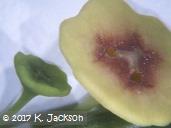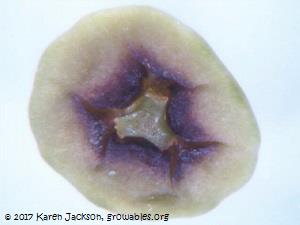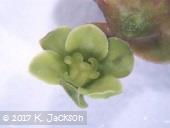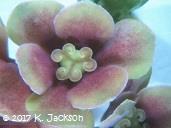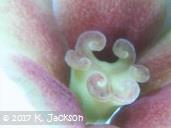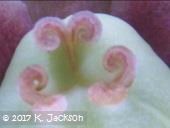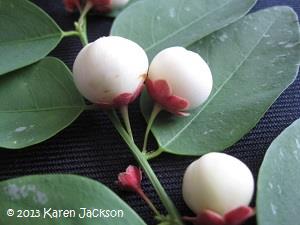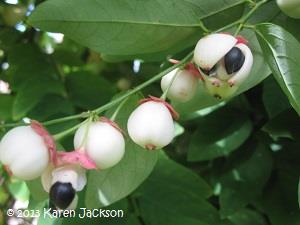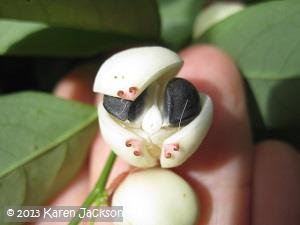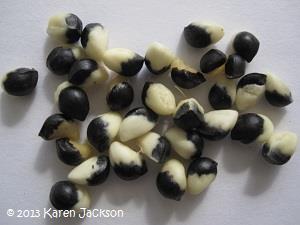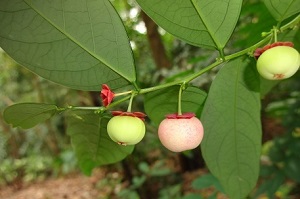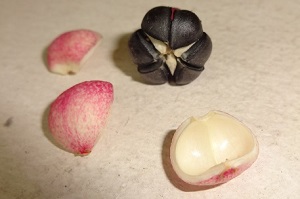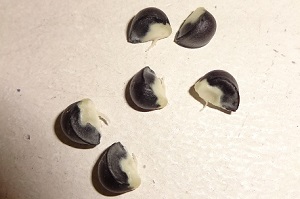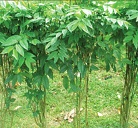| Katuk - Sauropus androgynus (L.) | |||||||||||||||||||||||||||||||||||||||||||||
|---|---|---|---|---|---|---|---|---|---|---|---|---|---|---|---|---|---|---|---|---|---|---|---|---|---|---|---|---|---|---|---|---|---|---|---|---|---|---|---|---|---|---|---|---|---|
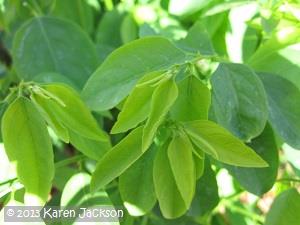 Fig. 1  Tender katuk leaves S. androgynus (L.) Merr. 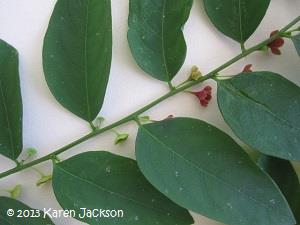 Fig. 2  Mature leaves and flowers 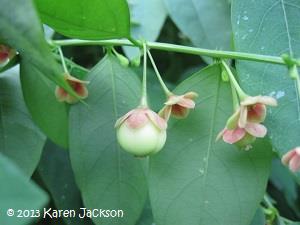 Fig. 3  Female flowers and fruit hang beneath the foliage 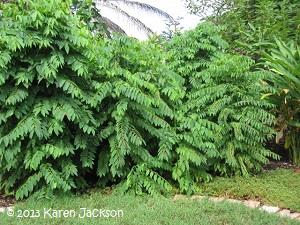 Fig. 18  Katuk plants in a home garden, Florida USDA Plant Hardiness Zone 10a 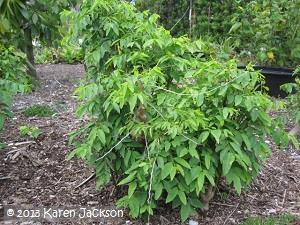 Fig. 19  New spring growth 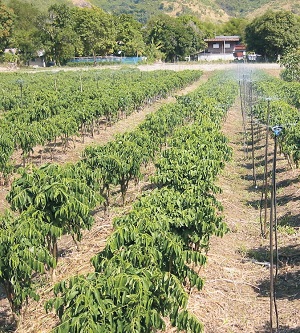 Fig. 20  Field production 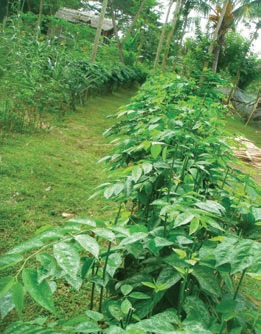 Fig. 21 Tips and leaves ready for harvest 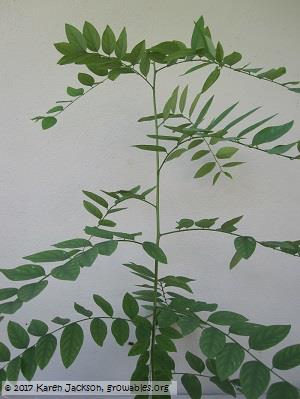 Fig. 22  Plant habit: stem with side branches 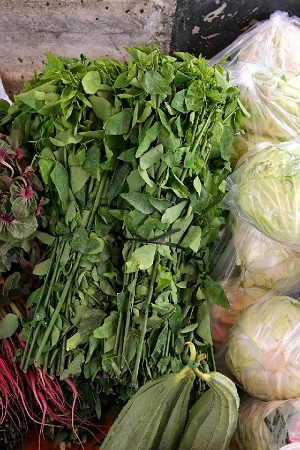 Fig. 23  Katuk leaves for sale at the market, Ranau, Borneo 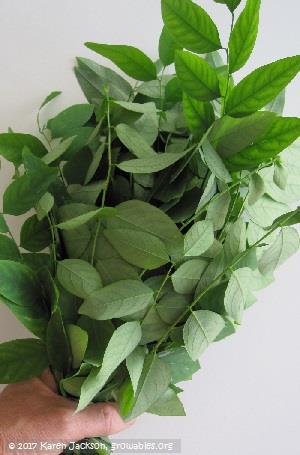 Fig. 24  Harvested katuk leaves 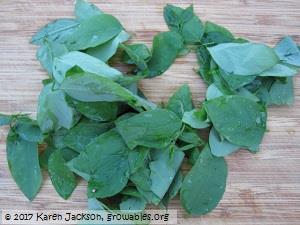 Fig. 25  Washed, ready to cook 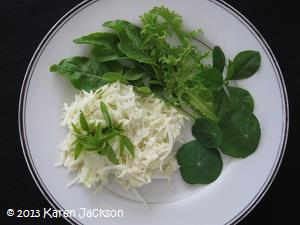 Fig. 26  Green papaya salad with katuk tips, lettuce and nasturtium leaves 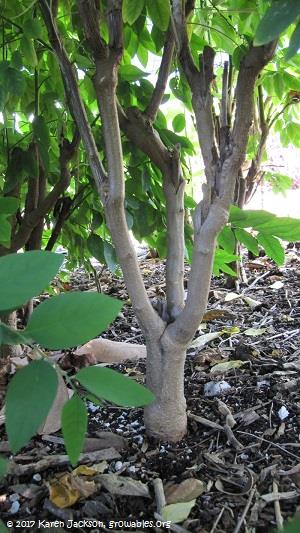 Fig. 27  Pruned annually to encourage multiple stems 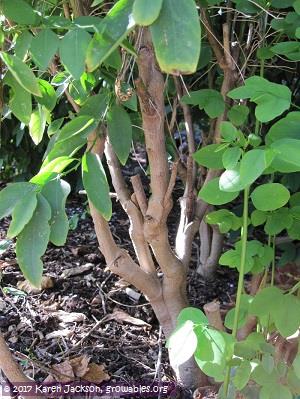 Fig. 28  Ten year old plant, Sarasota, Florida USDA Plant Hardiness Zone 10a 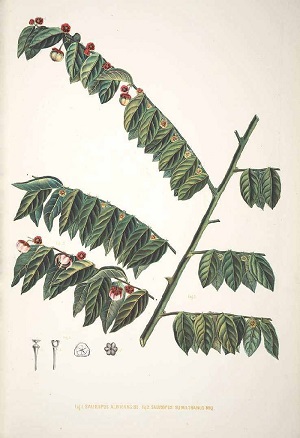 Fig. 37  S. Albicans BL., S. Sumatranus Miq. |
Scientific
name Sauropus androgynus (L.) Merr. Pronunciation SAW row-puss an-DROG-ah-nus 3 Common names English: star gooseberry, sweet leaf; Solomon Islands: Borneo; Spanish: katuk; babing, binahian, ngub, hvaan baanz, phakwan-ban, cherkor manis, chekkurmanis, madhura cherai, cherai, simani, thavasai murungai 1 Synonyms Aalius androgyna (L.) Kuntze, A. lanceolata (Hook.f.) Kuntze, A. oblongifolia (Hook.f.) Kuntze, A. retroversa (Wight) Kuntze, A. sumatrana (Miq.) Kuntze, Agyneia ovata Poir., Andrachne ovata Lam. ex Poir., Clutia androgyna L., Phyllanthus acidissimus Noronha [Invalid], P. androgynus (L.) J.A. González, P. speciosus Noronha [Invalid], P. strictus Roxb., S. albicans Blume, S. albicans var. gardnerianus (Wight) Müll.Arg., S. albicans var. intermedius Müll.Arg., S. albicans var. zeylanicus (Wight) Müll.Arg., S. convexus J.J.Sm., S. gardnerianus Wight, S. indicus Wight, S. lanceolatus Hook.f., S. macranthus Fern.-Vill. [Illegitimate], S. oblongifolius Hook.f., S. parviflorus Pax & K.Hoffm., S. retroversus Wight, S. scandens C.B.Rob., S. sumatranus Miq., S. zeylanicus Wight 2 Family Phyllanthaceae 10 Origin Katuk is probably native of India 1 USDA hardiness zones 11-12 11 Uses Leaves, flowers: food, fodder; living fence Life Form/habit A monoecious multi stem perennial shrub; long upright stems Height 6-11.5 ft (1.8-3.5 m) Growing period Growth slows during the colder months and crops can become unpalatable Growth rate Fast when hot and humid Pruning requirement Cut close to the ground in late winter or early spring Leaf Dark green alternate, oblong to nearly circular, 0.75-3 x 0.5-1 in. (2-7.5 x 1-3 cm), glaucous, entire 9 Crop cycle 270 - max. 365 days 1 Flower Calyx persistent, dark red or with dark red dots on a yellowish background 9 Fruit/seeds Fruit (capsules) globular to slightly 6-angular 9 Light requirement Clear bright skies to light shade 1 Photoperiod Short, neutral or long day 1 Soil Well drained 1 Soil depth for planting Medium 20-60 in. (50-150 cm), shallow 8-20 in. (20-50 cm) 1 Soil texture Clay, loam or sandy 6 pH preference Optimum 6-7, extreme 5.5-7.5 1 Drought tolerance Fairly drought tolerant Soil salt tolerance Low 1 Cold tolerance Frost sensitive, cold damage will occur at about 50 °F (10 °C) Plant spacing Space plants 2-4 ft (0.5-1 m) apart Invasive potential * None reported Disease/Pest resistance Generally disease and pest free Known hazard Taiwan, 1995, an unconfirmed weight control method resulted in several cases of illness 8 Reading Material Katuk Kontroversy. Sauropus androgynus from Green Dean, www.eattheweeds.com Sauropus androgynus (Sweet leaf bush) from the Australian New Crops Newsletter Katuk Sweet Leaf Bush I from the Archives of the Rare Fruit Council of Australia Katuk Sweet Leaf Bush II from the Archives of the Rare Fruit Council of Australia Sweetleaf (Top Ten Project) from the Australian Centre for International Agricultural Research pdf Description Perennial. Monoecious (having both the male and female reproductive organs). A rapidly growing warm season crop, katuk is a dark green leaf understory shrub. Growth slows during the colder months. Reaching up to 3.5 m in height, but is kept much lower in cultivation. It has side branches appearing to be pinnately divided branches, but with rose to carmine radiate flowers on the underside, a white or pinkish fruit opening at ripening to release three black seeds. It is well adapted to lowland tropical conditions and in Indonesia and Java it occurs from sea level to 1300 m in elevation. 1 Distribution China, India, Sri Lanka, Vietnam, Indonesia, Malaysia, Philippines, Papua New Guinea 10 Importance A very popular leaf vegetable with very high yields. Flowers Edible. Inflorescences in dense axillary, clustered together, first producing 1 to few female, afterwards several male flowers; flowers corolla absent, calyx persistent, dark red or with dark red dots on a yellowish background. 9
Fig. 4. Male flowers appear first, then female flowers are situated towards the ends of side shoots. Fig. 5. Male and female flowers on the same side shoot. Fig. 6,7,8,9. Male flower Fig. 10,11. Immature female flower Fig. 12,13. Female flower Fruit/seeds Fruit (capsules) globular to slightly 6-angular, up to 1.5 cm across, white or slightly flushed with pink or purplish, dehiscing to release 3 seeds; seeds triangular intransverse section, black. 9
Fig. 14,15. Female flower, fruit forming Fig. 16. Female and male flowers and fruit Fig. 17. Flowers and fruit Varieties Some Australian sources mention a variety with pink fruit, while in South and Southwest Florida plants with white fruit seem to be more common, a third variety has variegated leaves. Harvesting First harvest may be taken after 55-70 days after vegetative propagation. 1 Harvest the leaves and young shoots/tips. Flowers and immature fruit are also easily stripped from the stem. The leaves and tips do not store well as they go limp (to reduce this it is best to harvest in the coolest part of the day). 7 Propagation New plants can be propagated readily from 6-8 in. (14-20 cm) cuttings. Use stems with some hardwood. Seed viability: 3-4 months. Germination can be slow.
Fig. 29. White fruit Fig. 30,31. White fruit, seeds fall to the ground when ripe Fig. 32. Seeds, store in a cool, dry place Fig. 33. Pink fruit and flower Fig. 34. Pink fruit: ripe seeds Fig. 35. Six seeds per fruit Planting Plant out cuttings and seedlings during the spring and summer, new plants will grow well with heat, humidity and rain. Pruning Regular pruning promotes new growth. In cooler climates when katuk becomes relatively dormant the stems can be cut fairly close to the ground, 4-6 in. (10-15 cm), and new growth will begin during the spring. Fertilizing/Irrigation Katuk will thrive if given regular fertilizer applications and plenty of water. Farmers in Malaysia have been forcing the growth of stem tips by fertilization, irrigation and the use of shade cloth. 8 Pests/Diseases Hardly any problems; katuk seems to be mostly pest and disease resistant. However, there is a report of some damage overseas (Hawaii) from the Chinese rose beetle (Adoretus sinicus; agrss.sherman.hawaii.edu/onfarm/veg/veg0000b.html). 8 Food uses S. androgynus has a pleasant taste similar to that of fresh garden peas and perhaps slightly nutty. The young leaves and the top 6 in. (15 cm) of stem tips are normally eaten raw in salads, with the flowers and immature fruit, combining well with tomato, cucumber and onions. The tips are also eaten as tropical asparagus. The older leaves, flowers and immature fruit can be steamed, boiled or baked, adding to stir-fry, rice and egg dishes, soups or casseroles and are good in any dish which calls for parsley or spinach. The leaves retain their dark green colour and firm texture on cooking and are served in restaurants as "sayor manis". 4,6,8 Nutritional value The leaves of S. androgynus have a high level of provitamin A carotenoids, especially in freshly picked leaves, as well as high levels of vitamins B and C, protein and minerals. Nutrient content of the leaves is usually higher in more mature leaves. 5,8 Medicinal Properties ** In India it is known as Multivitamin Plant as it contains an excellent source of vitamins A, B, C, carotenoid and also it has high nutritive value and contains phytochemicals which can act as antioxidant. The leafy vegetable S. androgynus is commonly used as an effective medicinal herb in the treatment of diabetics, cancer, inflammation, microbial infection, cholesterol and allergy due to its antioxidant effect. 5, 8 Other Uses Katuk is often grown as an edible hedge in home gardens. Regular harvesting/pruning is an easy way to keeping it looking very attractive. Leaves are used for dying food and they can also be used as feed for cattle and poultry. 1
Fig. 36. Mature plants in a hedgerow. Further reading Sauropus androgynus Merr (Katuk) from the Edible Leaves Of The Tropics publication, U.S. Department of Agriculture, 1979 Top 10 Nutritious Leafy Vegetables in the Pacific Project from the Australian Centre for International Agricultural Research List of Growers and Vendors |
||||||||||||||||||||||||||||||||||||||||||||
| Bibliography 1 "Sauropus androgynus." ecocrop.fao.org. Food and Agriculture Organization of the United Nations. N.d. Web 12 Jul. 2014. 2 "Sauropus androgynus (L.) Merr. synonyms."The Plant List (2013). Version 1.1, www.theplantlist.org/tpl1.1/record/kew-186394. Accessed 16 Aug. 2017. 3 Deane, Green. "Katuk Kontroversy." Eat the Weeds and other things, too. www.eattheweeds.com. Accessed 19 Nov. 2016. 4 Goebal, Roger, et al. "Feasibility study on increasing the consumption of nutritionally rich leafy vegetables by Indigenous communities in Samoa, Solomon Islands and northern Australia." Project no. PC/2010/063. Final report, Australian Centre for International Agricultural Research, Aug. 2014, aciar.gov.au/files/pc-2010-063_final_report_2.pdf. Accessed 20 Aug. 2017. 5 Senthamarai Selvi. V and Anusha Basker “Phytochemical Analysis and GC-MS profiling in the leaves of Sauropus Androgynus (l) MERR,” ijddr.in. Int. J. Drug Dev. & Res., Jan-March 2012, 4(1): 162-167. Web. 10 Aug. 2013. 6 Chandlee, David. "Sweet Leaf Bush I." Aug. 1990. rfcarchives.org.au. The Archives of the Rare Fruit Council of Australia. Web. 11 Jul. 2014. 7 Bovey, Arthur. "Sweet Leaf Bush II." Jul. 1996. rfcarchives.org.au The Archives of the Rare Fruit Council of Australia. Web. 12 Jul. 2014. 8 GK and Rob Fletcher. "Sauropus androgynus (sweet leaf bush)." The Australian New Crops Newsletter. School of Land and Food, The University of Queensland, Gatton College, 4345, Australia. Mar. 1999. Web. Accessed 10 Aug. 2013. 9 "Field production." Discover Indigenous Vegetables! World Vegetable Center, avrdc.org/sweet-leaf-bush-sauropus-androgynus/. Accessed 18 Aug. 2017. 10 "Taxon: Sauropus androgynus (L.) Merr." U.S., National Plant Germplasm System, npgsweb.ars-grin.gov/gringlobal/taxonomydetail.aspx?33189. Accessed 20 Feb. 2018. 11 Plant Profile." usda.gov. U. S. Department of Agriculture. N.d. Web 14 Jul. 2014. Photographs Fig. 1,2,3,4,5,6,7,8,9,10,11,12,13,14,15,16,17,18,19,22,24,25,26,27,28,29,30,31,32 Jackson, Karen. "Katuk Series." 2013, 2017. JPG file. Fig. 20 Sweet leaf bush (Sauropus androgynus). SweetLeaf Bush, Discover Indigenous Vegetables! World Vegetable Center, avrdc.org/sweet-leaf-bush-sauropus-androgynus/. Accessed 18 Aug. 2017 Fig. 21,36 Sweetleaf. Factsheet no. 5, Leafy green vegetables in the tropics, Australian Centre for International Agricultural Research, 15 July 2013, aciar.gov.au/News2013July. Accessed 20 Aug. 2017 Fig. 23 Rod, Tony. Leaves for sale at the market. Sauropus androgynus 041006-2298. 6 Oct. 2004, (CC BY-NC-SA 2.0), flickr.com/photos/tony_rodd/4713535223/in/photolist-8bw6NF-5Vxpfh-5Vt3PZ/. Accessed 18 Aug. 2017. Fig. 33,34,35 Kwan. Sauropus androgynus. The Plant Observatory. natureloveyou.sg/Sauropus%20androgynus/Main.html. Accessed 19 Aug. 2017 Fig. 37 Miquel, F.A.W. Sauropus Albicans BL., Sauropus Sumatranus Miq. Choix de plantes rares ou nouvelles, cultivées et dessinées dans le jardin botanique de Buitenzorg, t. 6 (1864, Illustration contributed by the Missouri Botanical Garden, St. Louis, U.S.A., plantillustratons.org/illustration.php?id_illustration=48401. Accessed 16 Aug. 2017. * UF/IFAS Assessment of Non-native Plants in Florida's Natural Areas ** The information provided above is not intended to be used as a guide for treatment of medical conditions using plants. Published 11 Jul. 2013 KJ. Last update 21 Feb. 2018 KJ |
|||||||||||||||||||||||||||||||||||||||||||||




